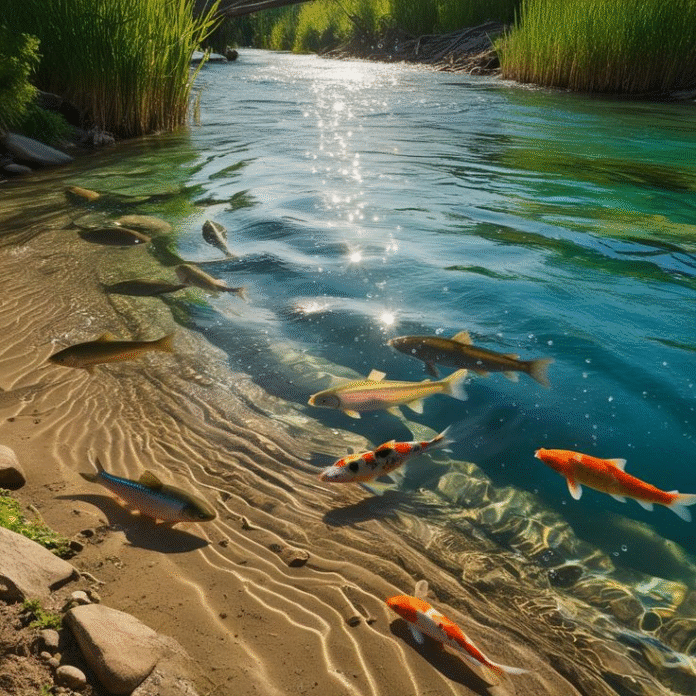Rivers are the lifelines of both human civilization and natural ecosystems. They support diverse species of plants, animals, and microorganisms while providing water for drinking, agriculture, and industry. River ecosystems are dynamic, interconnected systems where water, land, and living organisms interact continuously. However, these vital ecosystems are facing unprecedented threats due to human activities and climate change. Understanding these ecosystems and the risks they face is crucial for their conservation.
Importance of River Ecosystems
River ecosystems serve as habitats for countless species, including fish, amphibians, birds, and aquatic plants. They also support freshwater biodiversity, which is essential for maintaining ecological balance. Besides ecological benefits, rivers provide economic resources such as fisheries, irrigation for crops, and freshwater for industries and households. Rivers also play a crucial role in nutrient cycling, sediment transport, and maintaining groundwater levels.
Major Threats to River Ecosystems
- Pollution: One of the most critical threats is pollution from industrial discharge, agricultural runoff, and untreated sewage. Chemicals, heavy metals, and pesticides contaminate the water, harming aquatic life and affecting water quality for human use.
- Overfishing and Habitat Destruction: Excessive fishing and the destruction of riverbanks for agriculture or urban development disrupt the natural habitats of many species. This leads to a decline in biodiversity and destabilizes the food chain.
- Dams and Water Diversion: While dams support hydroelectricity and irrigation, they alter natural river flow, block migration routes for fish, and change sediment deposition patterns. This can lead to erosion, loss of fertile lands downstream, and disruption of aquatic ecosystems.
- Climate Change: Changes in rainfall patterns and increasing temperatures affect river water levels. Droughts reduce flow, while extreme rainfall can cause floods, both of which disturb aquatic habitats and the species dependent on them.
- Invasive Species: Non-native species introduced into river systems often outcompete native species, altering the ecosystem and reducing biodiversity.
Conservation and Management Strategies
Protecting river ecosystems requires a combination of policy measures, scientific research, and community involvement. Effective wastewater treatment, stricter industrial regulations, and sustainable agricultural practices can reduce pollution levels. Protecting riparian zones and creating buffer areas along riverbanks help maintain habitat integrity. Fish ladders and bypass systems around dams can allow aquatic species to migrate freely. Additionally, public awareness campaigns and community-driven conservation initiatives encourage responsible water use and stewardship.
The Role of Technology and Research
Advances in environmental monitoring and research are playing a key role in conserving rivers. Remote sensing and GIS mapping help track changes in river ecosystems and identify pollution sources. Scientific studies on species population, water quality, and river flow patterns provide insights for evidence-based policy-making. Citizen science projects, where communities monitor local rivers, also contribute to real-time conservation efforts.
Rivers are essential for life on Earth, sustaining biodiversity, human communities, and ecological processes. Yet, pollution, habitat destruction, climate change, and unsustainable human interventions threaten these fragile ecosystems. It is imperative for governments, scientists, and local communities to work together to protect rivers through sustainable practices, research, and public engagement. Only by safeguarding river ecosystems can we ensure the survival of countless species and the continued availability of freshwater resources for generations to come.
Beyond personal benefits, photography as mindfulness can enhance creativity and problem-solving skills. By observing subtle details in everyday life, such as textures, colors, and movement, photographers train their minds to notice nuances often overlooked. This focused attention encourages curiosity, patience, and innovative thinking. Mindful photography can also be combined with other practices like journaling, meditation, or nature walks to amplify its calming effects. For children and elderly individuals, this practice can stimulate imagination and cognitive engagement. Overall, using photography as a meditative tool strengthens emotional resilience, fosters self-expression, and encourages a more present, appreciative approach to life.



